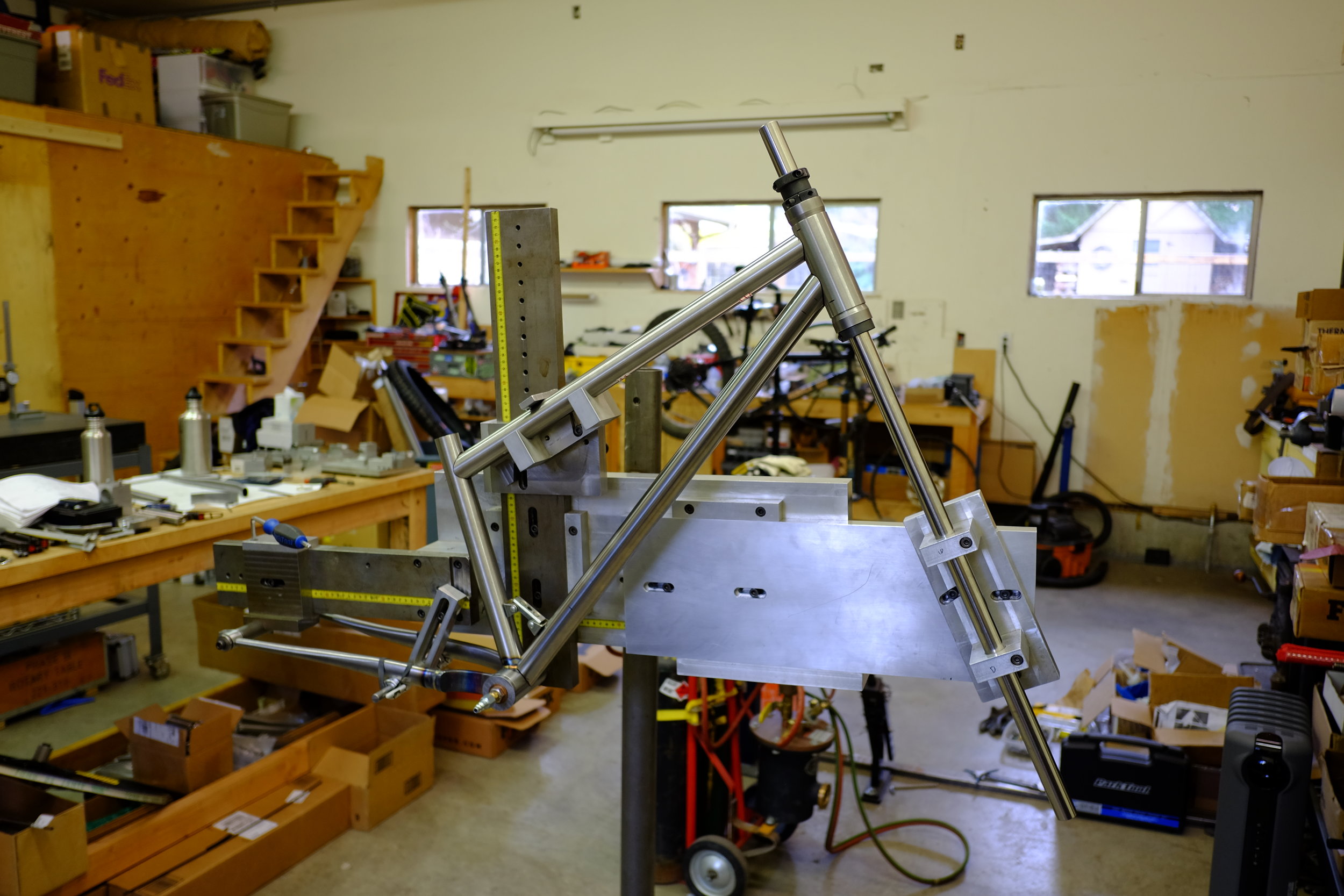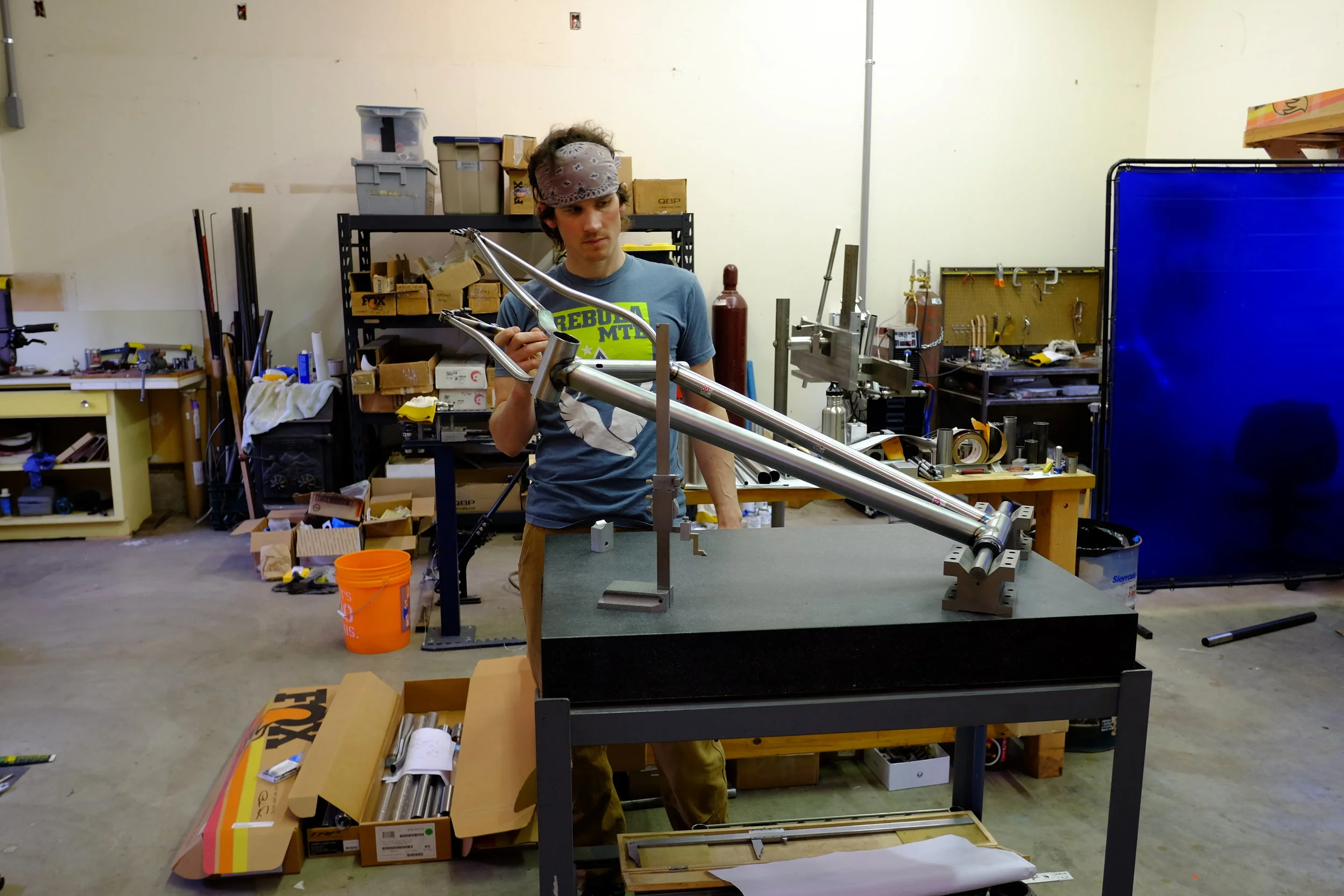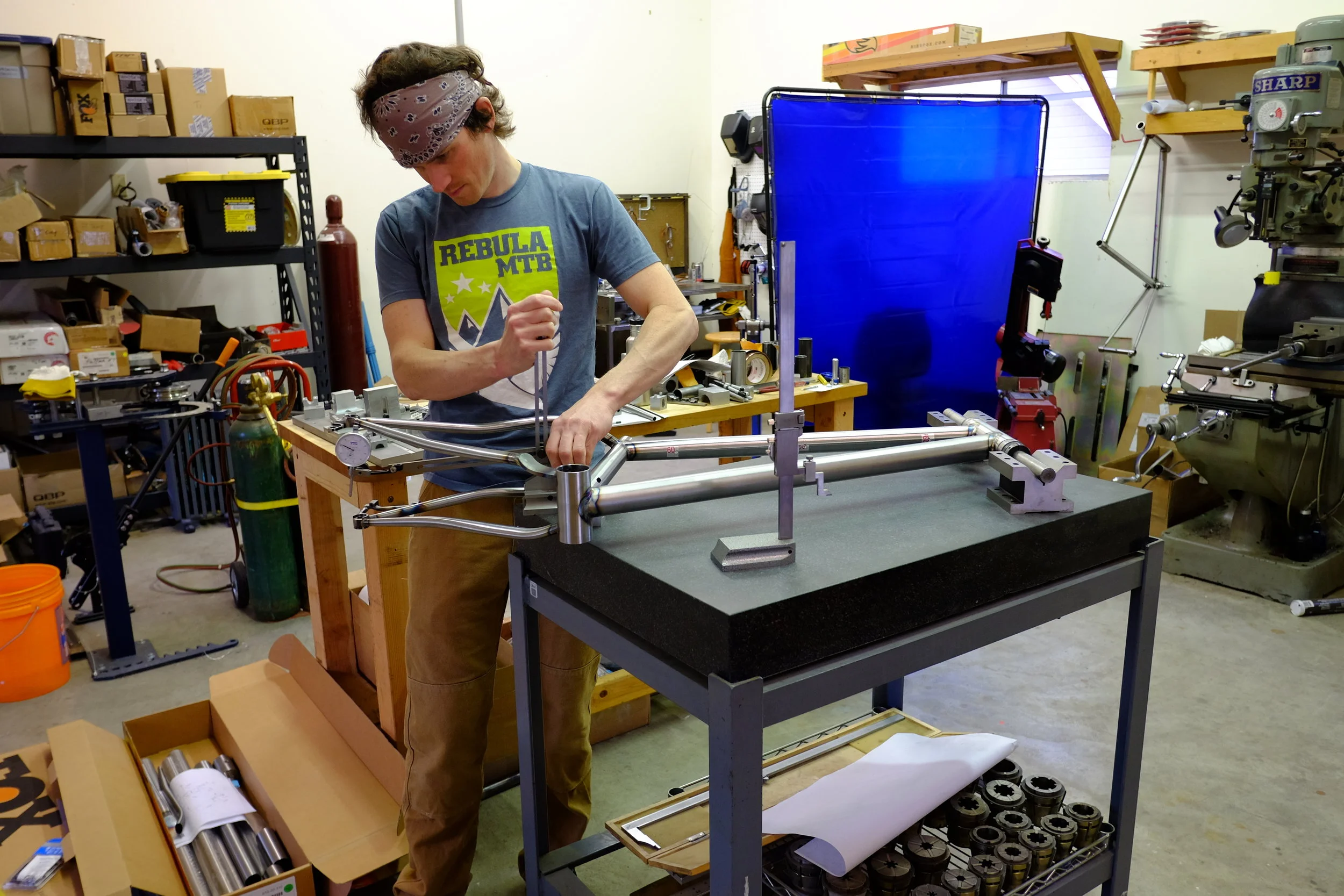Going to Extreme Ends: The 2019 Goshawk Experiments
Exploring the limits of large and small
The Goshawk program began in 2014 as an exploration of plus tires.
With each year, we integrate our learnings into the Rebula MTB lineup and create the next experimental bikes to test for ourselves. In 2014, Chris built an experimental 27+ bike , which refined into the original Goshawk, and now evolved into the Goshawk 120. Similar experiments produced bike models that range from the mixed-wheel Forest Falcon to the confident speed machine that is the Goshawk 150; all the while, we build a deeper understanding of handling characteristics across a spectrum of bike design parameters, enabling outstanding results for riders who choose our custom bikes.
Last year, our experiments produced the Goshawk 150
For 2018, we started with our Goshawk 120 and took a measured approach to longer/slacker with the goal of increasing stability when descending steep terrain and to understand if it was possible to adapt riding style in ways that let you still climb technical terrain. Goshawk 150 put those learnings to work for our customers with a bike that climbs well and enables you to let the bike run downslope confidently. It’s a blast.
Now, we’re pushing the boundaries in two directions.
Take a good look at the size of the frame in the photo compared to Chris Rebula - it’s gargantuan. We had to extend our measurement table setup. Behold the Goshawk 160: longer, slacker, and built around a 160mm fork and SuperBoost hub spacing. There’s only one way to find out if the bike is still an agile climber: go climb on it. We’re sure it will descend the steep stuff with aplomb, but what about cornering? Will it still retain the precision we love about the Goshawk 150? What are the trade offs and what the adaptations we can make to take full advantage of the new handling characteristics?
Also pictured is another steel machine headed in the other direction, the Goshawk 120SR, for “Short Reach.” We’re going to try and make the Goshawk 120 even more nimble by shortening the reach and wheelbase while maintaining the slacker head angle. How do our lines change when ripping down, up, and around Tiger Mountain? We want to dart in and out of tight trees and have fun with outright agility, but what happens when the terrain gets rough and steep?
Where do we go from here?
Fabrication has wrapped and we’ve got the bikes back from paint. As we build, test, and learn this page of The Notebook will get updated by our team; you can check back here from time to time, or subscribe to this list to get the latest sent directly to you, separate from our monthly newsletter.








